Brachytherapy for Prostate Cancer treatment in the Best Hospitals in the World
Treatment prices are regulated by national law of the corresponding countries, but can also include additional hospital coefficients. In order to receive the individual cost calculation, please send us the request and medical records.
Prostate Cancer Treatment
- Diagnostics
- Prostate cancer | PSMA-PET
- Radiation therapy
- High intensity focused ultrasound (HIFU)
- Transurethral electroresection
- Radical prostatectomy
- Lutetium-177 PSMA (Lu-177)
- Da Vinci prostatectomy
- Intensity-modulated radiation therapy (IMRT)
- Proton Therapy
- Chemotherapy
- Irreversible electroporation (NanoKnife)
- Photodynamic therapy
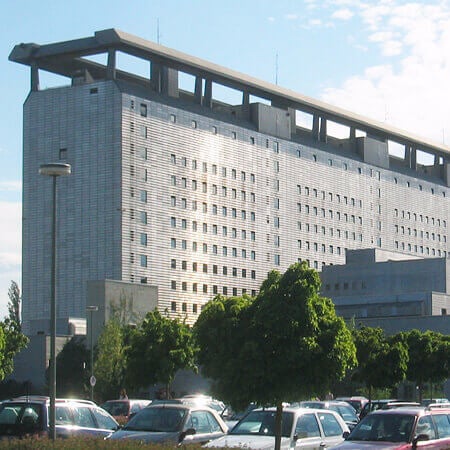
Department of Adult and Pediatric Urology, Andrology
The Department of Adult and Pediatric Urology, Andrology offers the full range of services in the areas of its specialization. Men and boys with diseases of the reproductive system can be diagnosed and treated in the medical facility. Doctors also treat infertility and erectile dysfunction. Medical care is provided to men and women with diseases of the urinary system, namely kidneys, ureters, bladder, and urethra. The department is certified as the Prostate Cancer Center by the German Cancer Society (DKG), which indicates the excellent quality of the services provided in this area. The department's urologists have a perfect command of the innovative treatment methods, including holmium laser enucleation of the prostate (HoLEP), photodynamic therapy, and da Vinci robot-assisted surgery. The department employs comprehensively trained and experienced doctors who apply advanced medical achievements in their practice. Each patient is provided with an individual approach, considering their specific needs and wishes.
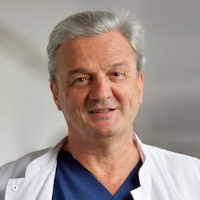





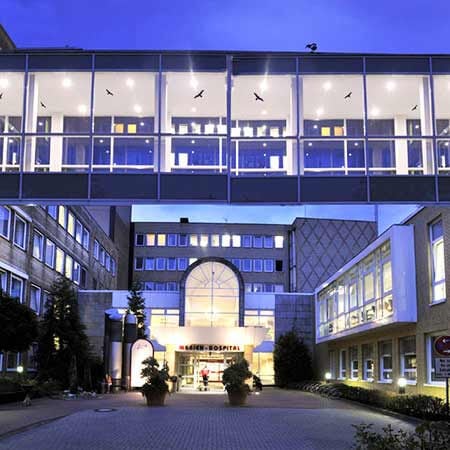
Department of Adult and Pediatric Urology, Andrology
The Department of Adult and Pediatric Urology, Andrology offers the full range of diagnostic and therapeutic services for patients with diseases of the urinary system and for men with pathologies of the reproductive system. The team at the medical facility also admits children and adolescents with urologic diseases. The department has 62 beds for inpatient treatment. Therapeutic options include both conservative and surgical techniques. Many operations are performed using the innovative da Vinci surgical system. The department also successfully uses modern laser systems, including the GreenLight laser, a holmium laser, a thulium laser and the laser for water vapor thermal therapy. The key focus of the department's work is on cancer surgery for malignant diseases of the prostate, bladder, kidneys, and testicles. The department also specializes in the treatment of urinary incontinence and pediatric urologic pathologies. Prostate diseases are treated in a specialized center certified in accordance with the DIN EN ISO 9001 requirements.
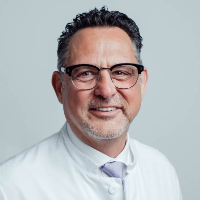


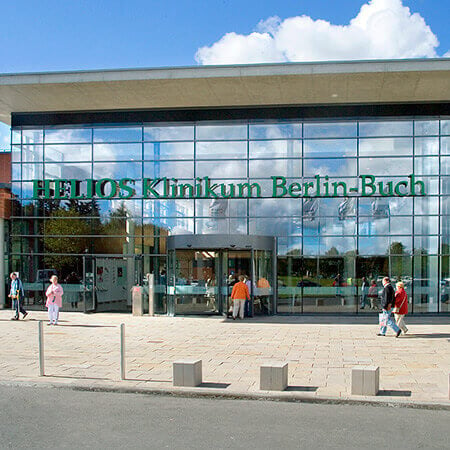
Department of Urology
The Department of Urology offers the full range of diagnostics and treatment in this medical field. The department's doctors have excellent qualifications in the treatment of diseases of the kidneys, urinary tract and reproductive organs in men. Of particular interest is the treatment of malignant urological neoplasms, which include prostate cancer, testicular cancer, kidney and bladder cancer. The department has in its arsenal many effective conservative and surgical treatment techniques, which can fully restore men's health.



Brachytherapy of the prostate gland is the internal radiation therapy of the prostate. This type of prostate cancer treatment is the minimally invasive radiation therapy of prostate cancer.
Brachytherapy for prostate cancer
Brachytherapy is a type of radiation therapy (radiotherapy) in which a radioactive source is placed directly into or next to prostate cancer locus. There are two main types of brachytherapy: the low dose rate (LDR) and the high dose rate (HDR) radiation therapy. The dose rate refers to the speed at which the radiation dose is delivered, not the actual dose itself. This kind of radiation therapy may not be available in all hospitals and is not suitable for all prostate cancers.
The medical treatment method of brachytherapy is based on the introduction of I-125 isotope microcapsules into the prostate tissue. The location of the grains in the tissue of the prostate gland delivers the required dose of radiation inside the organ and minimizes the irradiation of nearby organs and tissues. It is carried out using a computer planning system. To carry out computer planning, accurate knowledge of the volume and configuration of the prostate gland is required, for which the so-called volume study is performed.
Brachytherapy in the medical treatment of patients with localized prostate cancer is comparable in effectiveness to radical prostatectomy and external beam radiation therapy. This method of radiation therapy treatment is characterized by a small number of complications, a short stay in the hospital, and quicker rehabilitation of patients after the intervention.
Indications for brachytherapy for prostate cancer
The most important point that determines the results of brachytherapy largely is the correct selection of eligible patients. The selection is based on the assessment of clinical and laboratory parameters, data of the digital rectal examination, rectal ultrasound scanning with an accurate determination of the volume of the prostate gland. In some cases, when the extracapsular spread is confirmed, external radiation therapy is recommended, with a possible combination with brachytherapy at the first stage.
Indications for the procedure include:
- Histologically confirmed adenocarcinoma of the prostate
- Clinical stage T1-T2, absence of clinical signs of damage to seminal vesicles and regional lymph nodes, absence of metastases
- Life expectancy over 10 years
- Prostate volume less than 50 cc
- PSA blood level <20 ng/ml
- Maximum flow of urination is more than 10 ml per second
Brachytherapy shows excellent long-term results in the medical treatment of patients with resection of the prostate.
Contraindications include:
1. Severe obstruction and the presence of residual urine of more than 100 ml
2. Acute prostatitis and other infectious and inflammatory diseases of the genitourinary system
Special cases of prostate cancer
Age is not a contraindication to prostate cancer radiation therapy treatment. It is necessary to assess the general health condition, the patient's desire, etc. If the PSA blood level is more than 20 ng/ml or the Gleason score is more than 6 points, it is necessary to make an individual decision for each patient. Prostate cancer treatments in this category require individual approach.
In some cases, the anatomical structure of the pelvis is a serious obstacle to performing brachytherapy in prostate cancer. To identify this condition, the tomography of the small pelvis is performed, in which the individual location of the prostate gland and the pubic arch is assessed.
Types of brachytherapy for prostate cancer treatment
There are two main types of brachytherapy for prostate cancer.
LDR brachytherapy is a radiation therapy that involves the insertion of permanent radioactive sources directly into the prostate. These sources emit localized radiation to the entire prostate to destroy the cancer cells. The action of radiation is limited to the prostate and only a few millimeters around it. LDR brachytherapy is generally a radiation therapy treatment for men with prostate cancer, that is completely limited to the prostate gland borders. Placement of permanent radioactive sources requires a procedure under anesthesia that typically takes an hour or two. This prostate cancer treatment may take one or two days.
HDR brachytherapy is a radiation therapy that also involves radioactive material placing directly into the prostate. Unlike LDR, the placement of the material is temporary and shorter – usually it takes a day or two at a time. The radiation therapy takes place at a hospital but may require a longer stay compared to the LDR brachytherapy. It is often performed in combination with external beam radiation therapy for locally advanced disease.
How is the brachytherapy carried out?
Brachytherapy of the prostate is performed under general anesthesia or anesthesia in which the lower body is numbed. Anesthesia lasts 2-3 hours. During the radiation therapy procedure, the patient's legs are spread apart, and a bladder catheter is inserted.
After disinfection of the perineum, a probe is inserted into the anus, the images from which are projected onto a screen, thus the prostate gland is visualized. After imaging the prostate, the specialist begins to insert hollow needles into the prostate gland. The number of needles depends on the size of the prostate and varies from 15 to 30 pieces.
Through hollow needles, radioactive nuclei are injected into the prostate, which either remain there forever or are removed after a certain time. Depending on the size and shape of the prostate, from 1 to 6 radioactive nuclei are injected through the needle. Thus, during prostate brachytherapy, a total of 40-120 nuclei are injected into the gland.
The brachytherapy procedure takes approximately 1.5 hours. After the radiation therapy, the patient stays in the clinic for at least 24 hours, in a specially equipped room. The next morning after the radiation therapy, if the patient does not experience problems with urination, the catheter is removed and the patient is discharged from the clinic.
Radioactive nuclei in the prostate gland lose 50% of their charge within the first 2 months after brachytherapy. Although the dose of radiation outside the man's body is minimal, it is recommended to avoid frequent and long-term contact with children and pregnant women during the first time after therapy.
Sexual intercourse after brachytherapy is permitted, but the using a condom is recommended, as one or more radioactive nuclei can be ejected during orgasm. Also, nuclei can be thrown out during urination, therefore, for the first time after brachytherapy, it is recommended to urinate through a strainer, and in case of ejection of nuclei, collect them in a container specially issued to the patient.
Side effects of brachytherapy
During the first days after prostate brachytherapy, wounds may form in the area of punctures in the perineum. This will go away by itself and shouldn't be too worrisome. Also, in the first days after brachytherapy, blood clots may be present in the urine. In this case, it’s recommended to drink more water so that the blood quickly flows out naturally.
Burning sensation during urination and a frequent urge to urinate are more common, especially during the first weeks after undergoing therapy. These side effects occur most often in patients with large prostates and in patients who have already had urinary problems.
Sometimes a few days after brachytherapy a natural urine drainage is not possible. In such cases, a catheter must be inserted. There may also be problems with bowel movement. Side effects usually go away in a few weeks.
Urinary incontinence after brachytherapy is rare. Unfortunately, erection problems are more common side effects. According to statistics, 30% of men after a course of brachytherapy have problems with erection and orgasm.
You should call your doctor right away if you:
- Have increasing pain around the perineum (the area between your anus and the base of your scrotum) that is not relieved with painkillers. There may be only a mild pain in your perineum after the seed implantation, and it should get better each day.
- Have increasing swelling in your scrotum. There may be only a mild swelling after the seed implantation, and it should get better each day.
- Are not able to urinate (pee).
- Have any questions or concerns about how you are healing.
If you have any of these signs, talk to your doctor or health care team. There are medicines and medical treatments that can help you feel better. You should talk to your doctor or health care team about any side effects you may have during or after your radiation therapy. Your health care team can help treat these problems.
The cost of brachytherapy
With Booking Health services, you can book brachytherapy for prostate cancer at an affordable price. The cost of the procedure varies in different countries. We can arrange a trip for radiation therapy at a fair price. The cost of brachytherapy for prostate cancer goes as follows:
- Germany – from 18,000 EUR
- Turkey – from 12,000 EUR
- India – from 10,100 EUR
Where can I undergo brachytherapy for prostate cancer treatment abroad?
Among foreign hospitals, the best success rates in brachytherapy for prostate cancer treatment are demonstrated by:
- University Hospital of Ludwig Maximillian University of Munich, Department of Adult and Pediatric Urology. The department ranks among the TOP German departments specializing in prostate cancer treatment. It is certified as the Prostate Cancer Center according to the standards of the German Cancer Society. This fact confirms the credibility of the department in the field and the high success rates in prostate cancer treatment.
- Medipol Mega University Hospital Istanbul, Department of Adult and Pediatric Urology. The department offers a full range of diagnostics and treatment of genitourinary diseases in boys and men. Particular attention is paid to the surgical treatment of prostate cancer.
- University Hospital Ulm, Department of Adult and Pediatric Urology. The department ranks among the TOP German medical facilities specializing in prostate cancer treatment. The department is also certified by the German Cancer Society, therefore all the therapeutic interventions correspond to strict national and international standards.
How can I undergo brachytherapy treatment abroad?
The self-organization of radiation therapy treatment abroad can be overwhelming. It requires specific knowledge and experience in medical tourism. It is safer, easier, and less stressful to shift some responsibility onto a medical tourism agency.
Booking Health is the largest and most transparent medical tourism agency in the world. Medical treatment abroad is arranged due to the direct cooperation with leading foreign hospitals.
Booking Health provides the following services:
- Selection of radiation therapy program and medical facility
- Communication with the clinic
- Providing the patient with the favorable overall cost of radiation therapy procedures
- Translation of medical documents
- Help in applying for a visa for the patient and accompanying person
- Flight and accommodation booking
- Interpreting services
To undergo prostate cancer treatment abroad for a reasonable price, please leave a request on our website. The medical tourism manager will contact you within a few hours.

